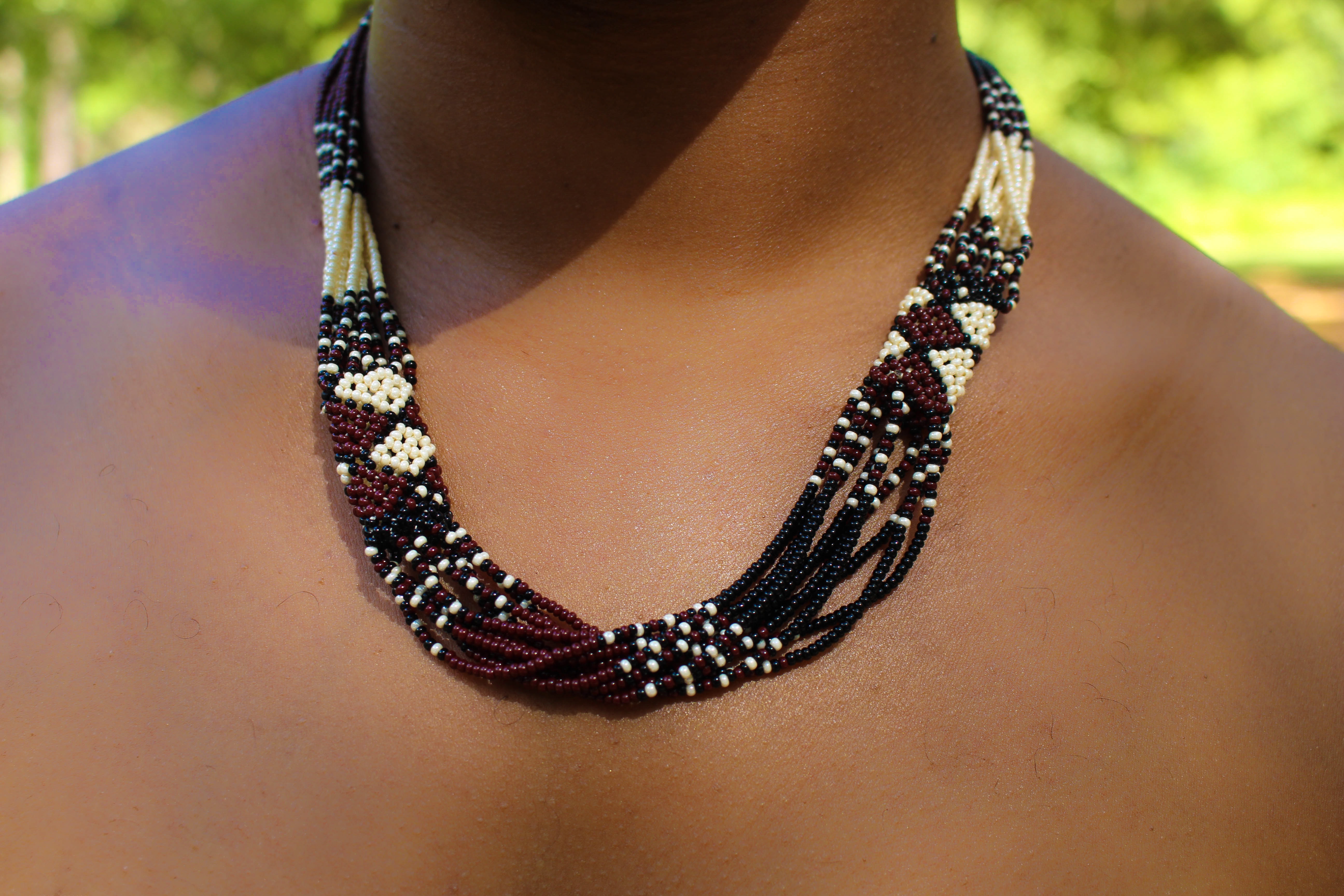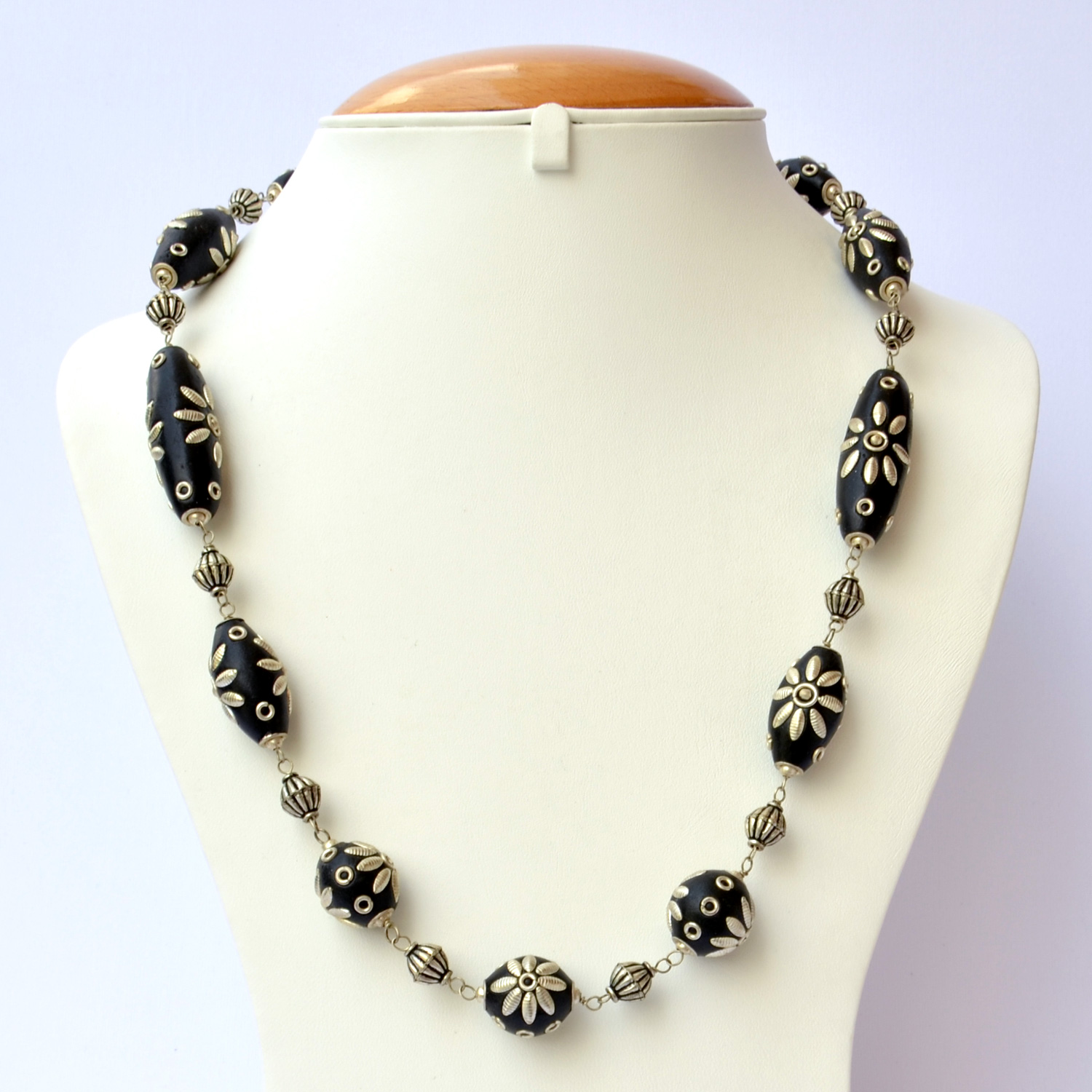Make bead necklace designs – Embark on a captivating journey into the art of bead necklace design, where creativity and meticulous craftsmanship intertwine. This comprehensive guide unveils the secrets to selecting the perfect beads, mastering fundamental and advanced necklace techniques, and exploring the nuances of color theory and pattern creation.
Prepare to elevate your jewelry-making skills and adorn yourself with stunning, one-of-a-kind bead necklaces.
Bead Selection and Preparation
The foundation of any exquisite bead necklace lies in the meticulous selection and preparation of its individual components. A discerning eye must be employed to choose beads that not only complement the design vision but also possess the requisite durability and aesthetic appeal.
Express your style and creativity with jewelry holders for you that showcase your precious pieces. From DIY projects using homemade jewelry ideas to cheap handmade jewelry , you can create unique and affordable adornments that reflect your personality. Discover innovative ways to display jewelry that enhance your home décor while keeping your treasures organized.
Whether you’re a seasoned jewelry maker or just starting out, explore simple earring making ideas to craft elegant and eye-catching earrings that will add a touch of sparkle to your everyday outfits.
Moreover, proper preparation techniques ensure that the necklace withstands the test of time and remains a cherished adornment.
Types of Beads
- Glass Beads:Renowned for their vibrant hues, intricate patterns, and versatility, glass beads come in a vast array of shapes and sizes, offering endless creative possibilities.
- Acrylic Beads:Lightweight and durable, acrylic beads provide a cost-effective alternative to glass, showcasing a wide range of colors and finishes.
- Gemstone Beads:Precious and semi-precious gemstones, such as pearls, turquoise, and lapis lazuli, lend an air of sophistication and timeless beauty to bead necklaces.
- Wooden Beads:Natural and earthy, wooden beads add a rustic charm to designs, available in various species and finishes.
- Metal Beads:Sterling silver, gold, and copper beads provide a touch of elegance and durability, complementing other materials seamlessly.
Factors to Consider When Selecting Beads
When choosing beads, several factors should be taken into account:
- Size:The size of the beads will determine the overall scale and impact of the necklace.
- Shape:Round, oval, square, or irregularly shaped beads can create different visual effects and textures.
- Color:The color of the beads should harmonize with the desired aesthetic, whether it’s a vibrant statement or a subtle complement.
- Finish:Beads can have a variety of finishes, such as matte, glossy, or metallic, which can influence the overall look and feel of the necklace.
Bead Preparation
Before stringing the beads, proper preparation is essential to ensure their longevity and enhance the necklace’s overall appeal:
- Cleaning:Beads should be cleaned thoroughly to remove any dirt or debris that may compromise the stringing material or the beads themselves.
- Stringing:The choice of stringing material, such as nylon, silk, or wire, depends on the weight and size of the beads.
- Finishing:Once the beads are strung, the necklace can be finished with clasps, jump rings, or other embellishments to complete the design.
Necklace Design Techniques
Crafting captivating necklaces involves mastering a diverse range of design techniques. From the fundamental to the intricate, each method offers unique possibilities for expressing your creativity and adorning your neckline with exquisite artistry.
Discover jewelry holders that elevate your precious pieces, transforming them into stunning displays. Unleash your creativity with homemade jewelry ideas that let you craft unique accessories. Explore cheap handmade jewelry options to adorn yourself with affordable elegance. Find inspiration in ways to display jewelry that showcase your collection in eye-catching style.
And delve into simple earring making ideas to create earrings that complement any outfit and add a touch of personal flair.
Explore the foundational necklace designs, including single-strand, multi-strand, choker, and pendant necklaces. Discover the nuances of advanced techniques such as bead weaving, wire wrapping, and macrame. Unleash your imagination as you delve into the step-by-step guides, empowering you to create stunning necklaces that reflect your personal style.
Fundamental Necklace Designs
Lay the foundation of your necklace-making journey by mastering the fundamental designs.
- Single-Strand Necklace:A timeless classic, featuring a single row of beads strung together, showcasing the beauty of each bead and its unique characteristics.
- Multi-Strand Necklace:Elevate your designs by combining multiple strands of beads, creating a layered and dynamic effect. Experiment with different bead sizes, colors, and textures to achieve a captivating look.
- Choker Necklace:A statement piece that sits close to the neck, adding a touch of elegance and sophistication. Choker necklaces can be adorned with a variety of beads, from delicate pearls to bold gemstones.
- Pendant Necklace:A versatile design that features a focal bead or pendant suspended from a chain or cord. Pendants can be intricate or simple, allowing for endless possibilities of personalization.
Color and Pattern Considerations: Make Bead Necklace Designs
When designing bead necklaces, color and pattern play a crucial role in creating visually captivating pieces. Understanding the principles of color theory and incorporating various bead patterns can elevate your designs and make them stand out.
Color Theory:
- Color Wheel:The color wheel is a circular diagram that displays the relationships between different colors. It is divided into three primary colors (red, yellow, and blue), three secondary colors (orange, green, and purple), and six tertiary colors (red-orange, yellow-orange, yellow-green, blue-green, blue-violet, and red-violet).
- Complementary Colors:Colors that are opposite each other on the color wheel, such as red and green or blue and orange, create a high contrast and visually appealing effect.
- Analogous Colors:Colors that are adjacent to each other on the color wheel, such as red, red-orange, and orange, create a harmonious and cohesive look.
- Neutral Colors:Black, white, and gray are considered neutral colors and can be used to balance and enhance other colors.
Bead Patterns:
- Symmetrical Patterns:Beads are arranged in a symmetrical pattern, creating a balanced and orderly look.
- Asymmetrical Patterns:Beads are arranged in an irregular pattern, adding a touch of unpredictability and interest.
- Geometric Patterns:Beads are arranged in geometric shapes, such as circles, squares, or triangles, creating a structured and modern look.
- Organic Patterns:Beads are arranged in a way that mimics natural forms, such as flowers, leaves, or waves, creating a more fluid and organic aesthetic.
Creating Visually Appealing Color Combinations and Patterns:
- Consider the Color Scheme:Choose a color scheme that complements your personal style and the occasion for which the necklace is intended.
- Experiment with Different Patterns:Try out different bead patterns to see what suits your design best.
- Balance Colors and Patterns:Use a variety of colors and patterns to create a visually interesting piece, but avoid overwhelming the design.
- Add Focal Points:Use larger beads or beads with unique shapes or colors to create focal points and draw attention to certain areas of the necklace.
Finishing and Presentation
Finishing your bead necklace with a professional touch is crucial for its durability, aesthetic appeal, and overall presentation. Displaying and storing your necklaces appropriately will enhance their visual impact and protect their delicate components.
Clasps and Closures
Selecting the right clasp or closure for your necklace depends on its weight, design, and intended use. Common options include:
- Lobster Claw Clasp:Secure and easy to use, suitable for most necklaces.
- Toggle Clasp:Decorative and adjustable, often used for heavier necklaces.
- Magnetic Clasp:Convenient and quick to fasten, but not as secure as other options.
Embellishments, Make bead necklace designs
Embellishments can add a touch of flair and personalization to your necklace. Consider adding:
- Charms:Small pendants or beads that symbolize a personal connection or style.
- Tassels:Decorative fringes that add movement and texture.
- Bead Caps:Decorative metal or glass pieces that enhance the look of individual beads.
Displaying and Presenting Necklaces
Displaying your necklaces in an attractive manner will entice potential customers and enhance their perceived value. Try:
- Necklace Stands:Vertical displays that showcase the necklace’s full length and design.
- Bust Forms:Mannequin-like forms that display necklaces in a realistic way.
- Jewelry Boxes:Elegant containers that protect necklaces during storage and transportation.
Packaging and Storage
Proper packaging and storage are essential for preserving the beauty and integrity of your bead necklaces:
- Anti-Tarnish Paper:Protects silver and gold-plated beads from oxidation.
- Jewelry Pouches:Soft, padded pouches that prevent scratches and tangles.
- Jewelry Boxes:Durable containers that provide a secure and organized storage solution.
Closing Notes
As you delve into the intricacies of bead necklace design, remember that the true essence lies in expressing your unique style and vision. Experiment with different materials, techniques, and patterns to create necklaces that resonate with your personality and inspire admiration.
Whether for personal adornment or as thoughtful gifts, handcrafted bead necklaces are a testament to your creativity and a cherished keepsake for years to come.
Answers to Common Questions
What are some popular bead types used in necklace designs?
Glass, acrylic, gemstone, metal, wood, and ceramic beads are commonly used in bead necklace designs, offering a wide range of textures, colors, and shapes.
How do I choose the right clasp for my bead necklace?
Consider the weight and style of your necklace when selecting a clasp. Lobster claws, toggle clasps, and magnetic clasps are popular options that provide secure and convenient closures.



